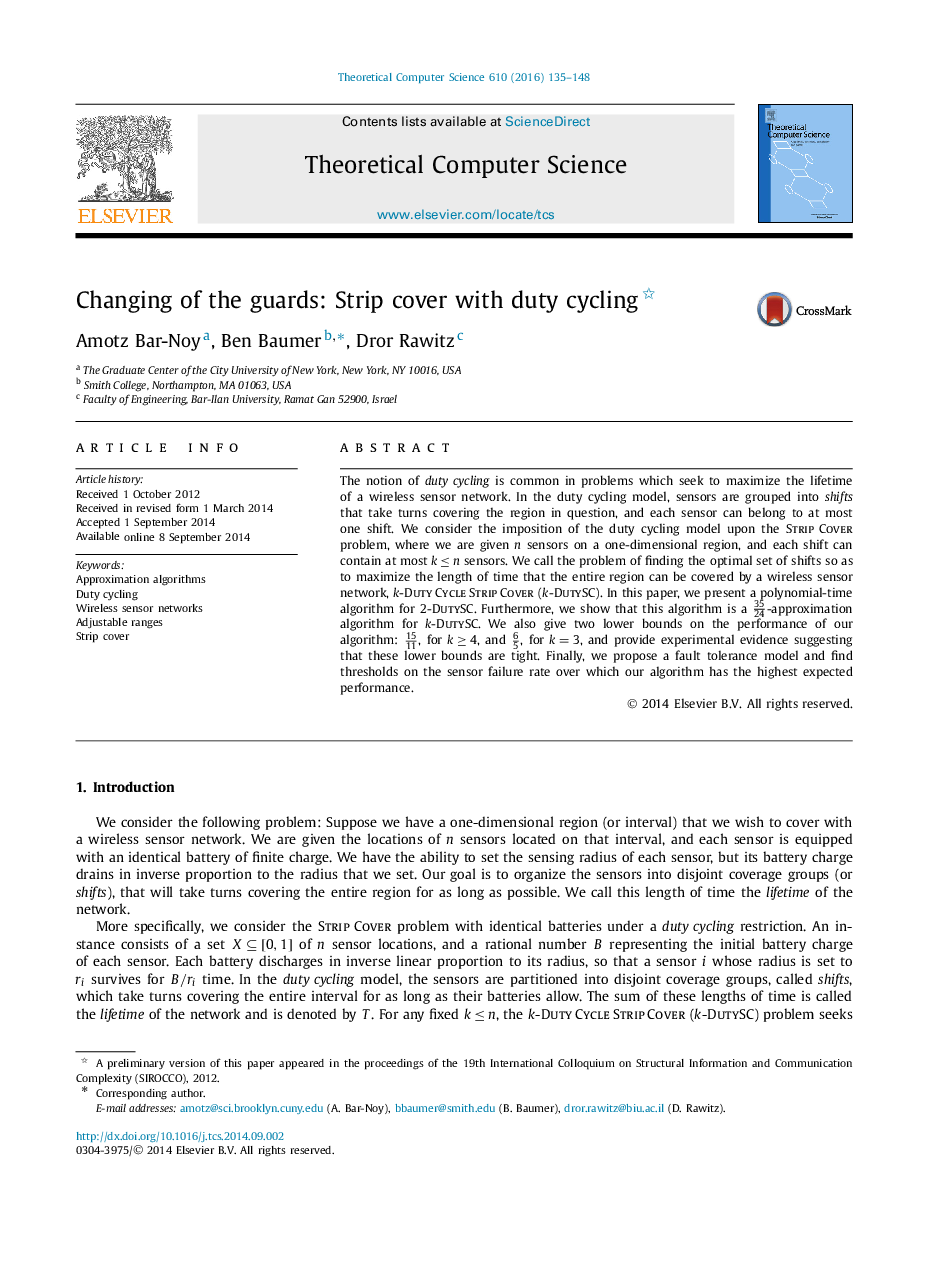| Article ID | Journal | Published Year | Pages | File Type |
|---|---|---|---|---|
| 435419 | Theoretical Computer Science | 2016 | 14 Pages |
The notion of duty cycling is common in problems which seek to maximize the lifetime of a wireless sensor network. In the duty cycling model, sensors are grouped into shifts that take turns covering the region in question, and each sensor can belong to at most one shift. We consider the imposition of the duty cycling model upon the Strip Cover problem, where we are given n sensors on a one-dimensional region, and each shift can contain at most k≤nk≤n sensors. We call the problem of finding the optimal set of shifts so as to maximize the length of time that the entire region can be covered by a wireless sensor network, k-Duty Cycle Strip Cover (k-DutySC). In this paper, we present a polynomial-time algorithm for 2-DutySC. Furthermore, we show that this algorithm is a 3524-approximation algorithm for k-DutySC. We also give two lower bounds on the performance of our algorithm: 1511, for k≥4k≥4, and 65, for k=3k=3, and provide experimental evidence suggesting that these lower bounds are tight. Finally, we propose a fault tolerance model and find thresholds on the sensor failure rate over which our algorithm has the highest expected performance.
